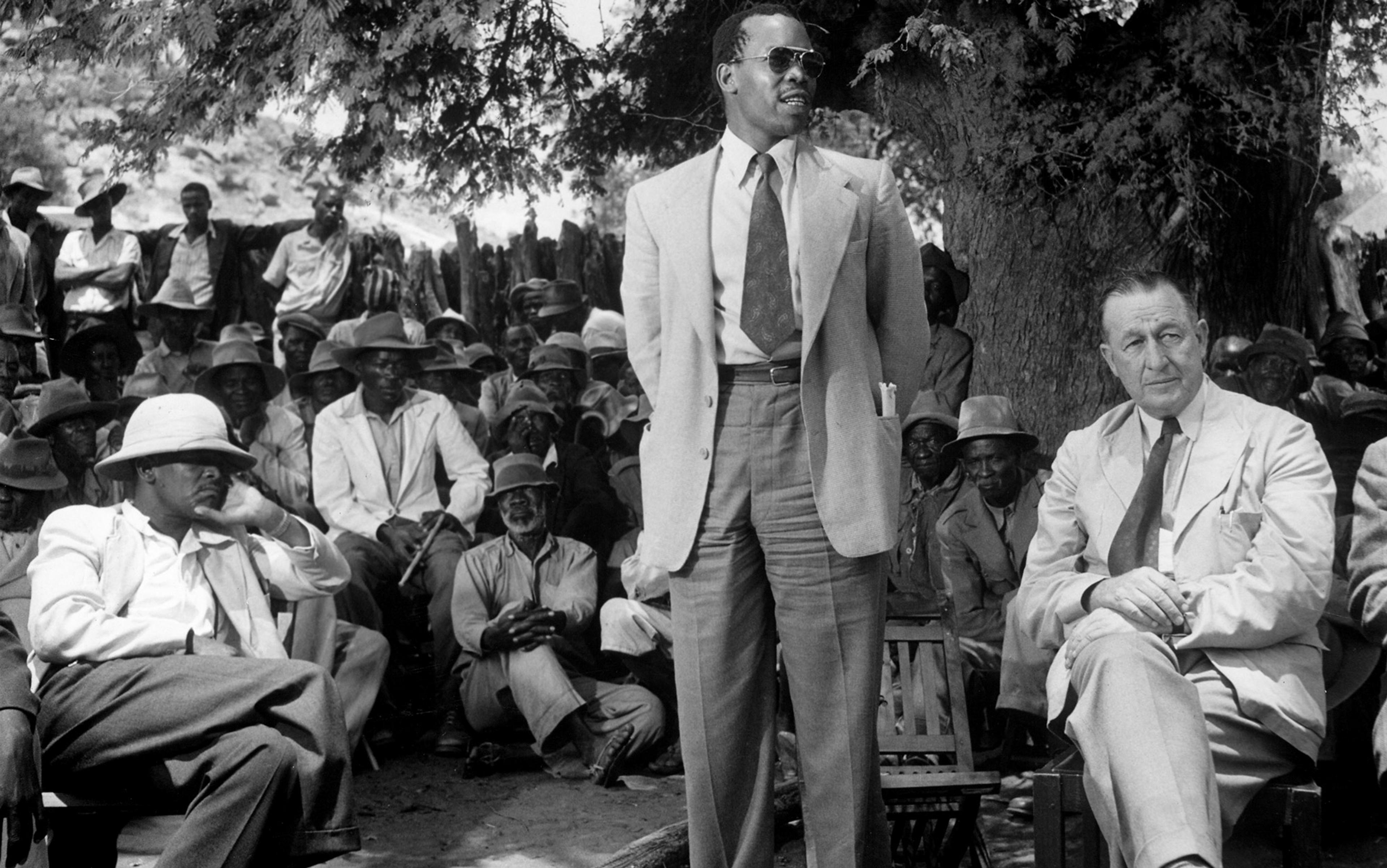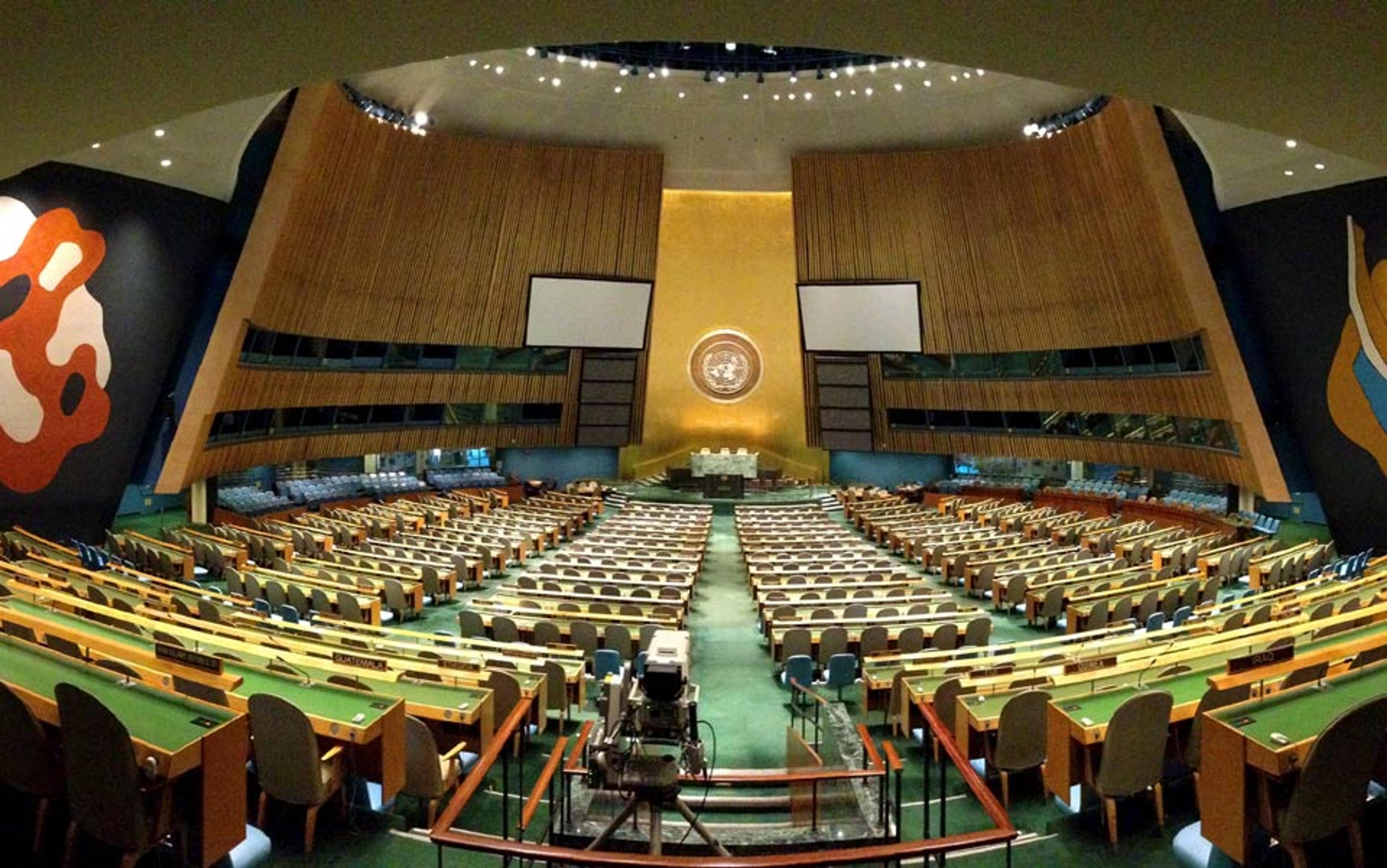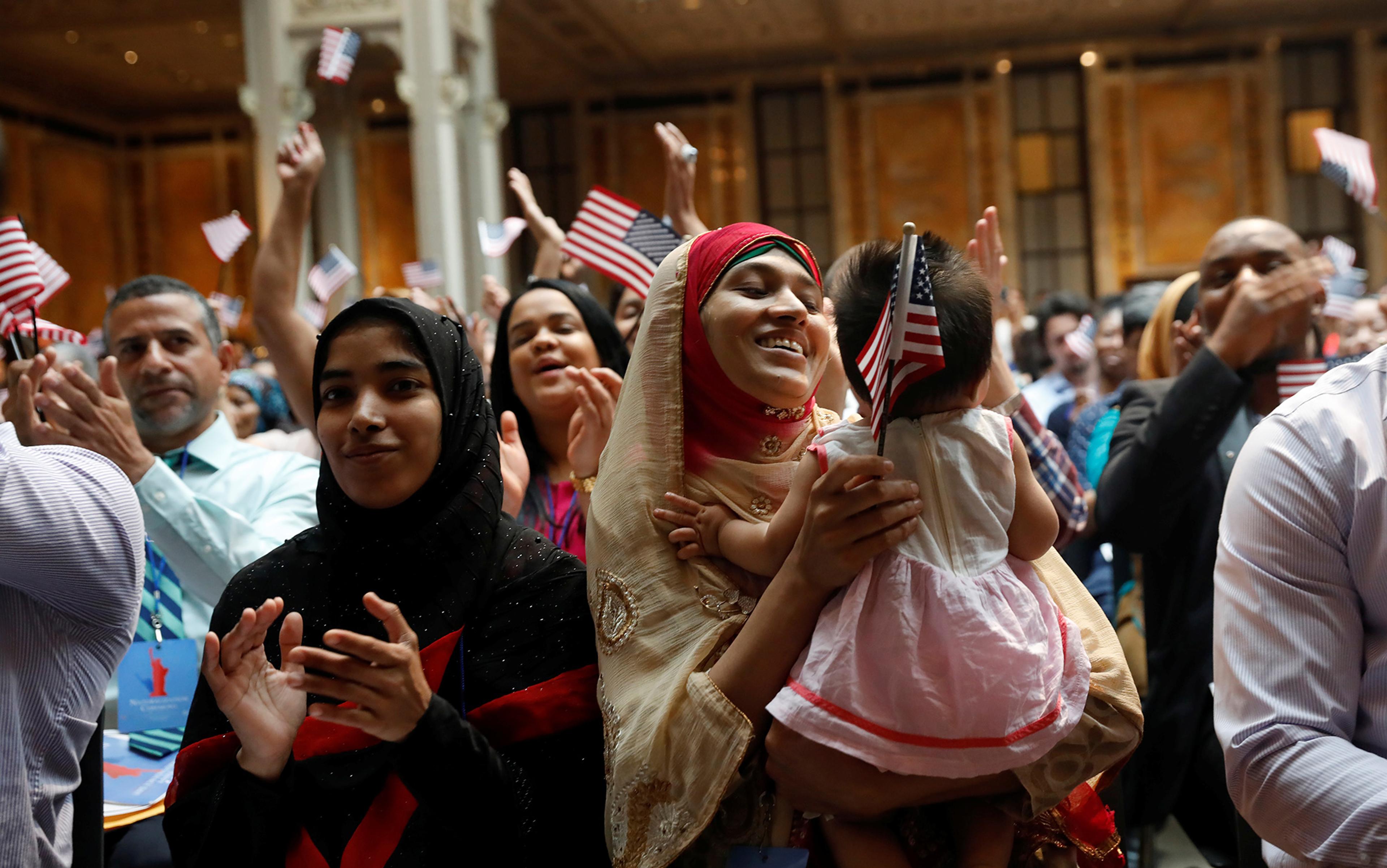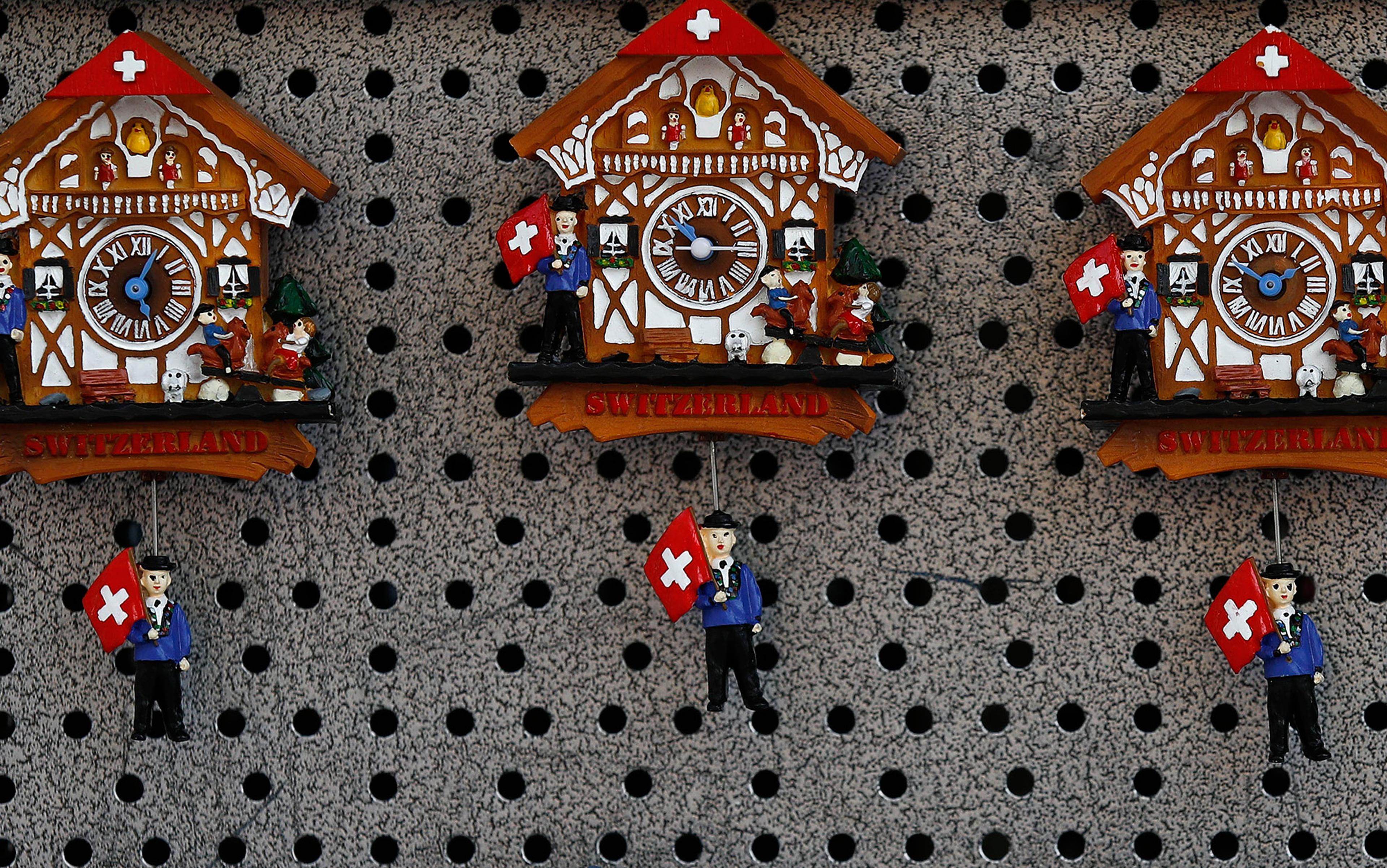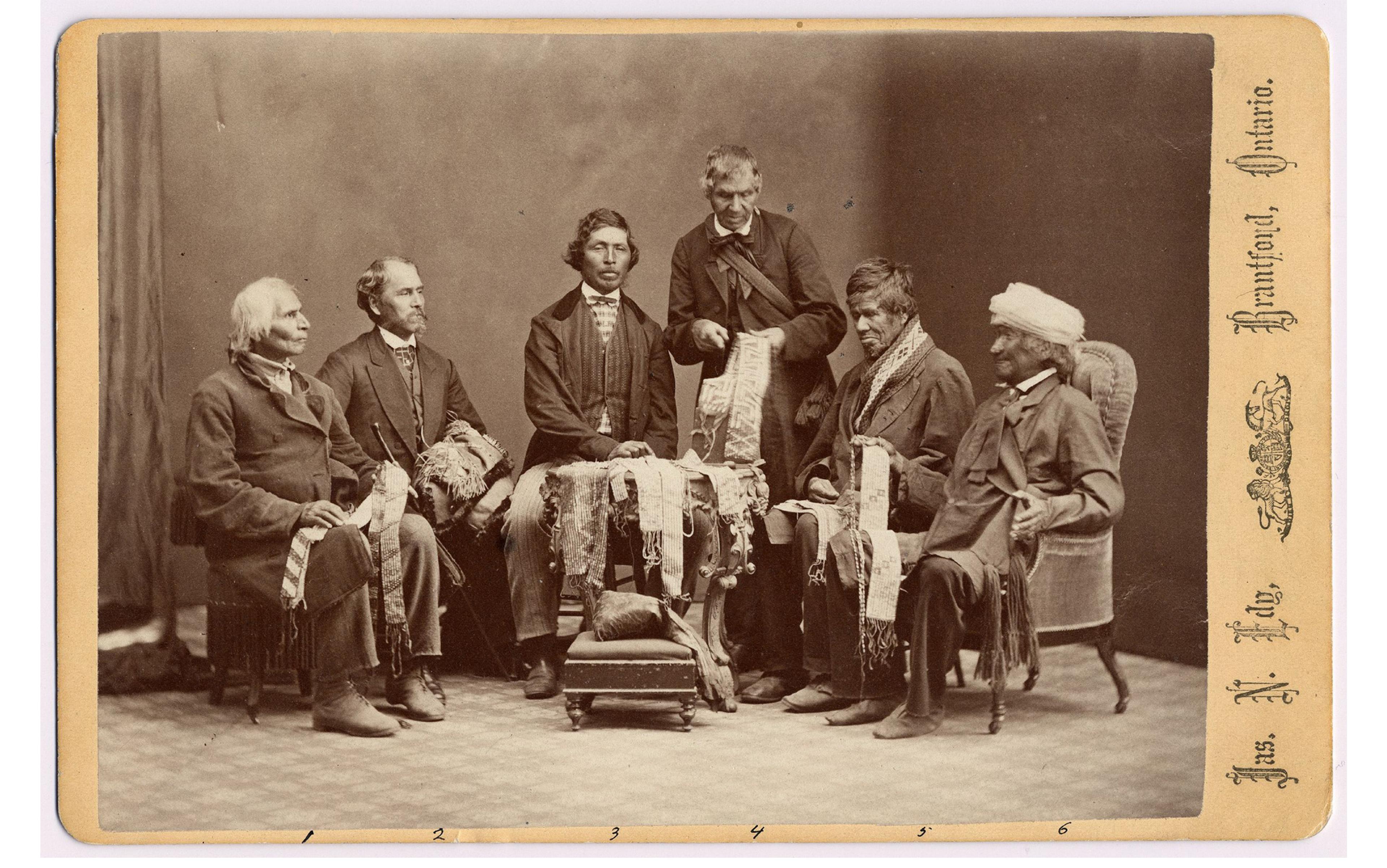Why do some countries fall apart, often along their ethnic fault lines, while others have held together over decades and centuries, despite governing a diverse population as well? Why is it, in other words, that nation-building succeeded in some places while it failed in others? The current tragedy in Syria illustrates the possibly murderous consequences of failed nation-building. Outside of the media spotlight, South Sudan and the Central African Republic went through similar experiences in recent years. In some rich and democratic countries in western Europe, such as Spain, Belgium and the United Kingdom, longstanding secessionist movements have regained momentum. Within our lifetimes, they might well succeed in breaking apart these states. On the other hand, there is no secessionist movement among the Cantonese speakers of southern China or among the Tamils of India. And why has no serious politician ever questioned national unity in such diverse countries as Switzerland or Burkina Faso?
Before answering these questions, it is necessary to define nation-building more precisely. It goes beyond the mere existence of an independent country with a flag, an anthem and an army. Some old countries (such as Belgium) haven’t come together as a nation, while other more recently founded states (such as India) have done so. There are two sides to the nation-building coin: the extension of political alliances across the terrain of a country, and the identification with and loyalty to the institutions of the state, independent of who currently governs. The former is the political-integration aspect, the latter the political-identity aspect of nation-building. To foster both, political ties between citizens and the state should reach across ethnic divides.
Such ties of alliance connect national governments with individual citizens, sometimes through intermediary political organisations such as voluntary associations, parties, professional groups, etc. Ideally, these ties link all citizens into networks of alliances centred on the state. In such countries, all citizens see themselves represented at the centre of power, even if their preferred party or political patron is not currently occupying one of the seats of government. Intellectuals, political elites, as well as the average individual will eventually see all citizens, irrespective of their racial or ethnic background, as equal members of the national community.
Effective nation-building brings important and positive consequences. Alliances that cut across the entire territory of a country depoliticise ethnic divisions. Politics is not perceived as a zero-sum game in which ethnic groups struggle for control of the state. Instead, more substantial policy issues concerning what the state should actually do come to the foreground of the debate. Inclusive political coalitions also foster a sense of ownership of the state and promote the ideal of a collective purpose beyond one’s family, village, clan or profession. Conformingly, citizens who identify with their nation are less resistant to paying taxes, more likely to support welfare policies, and are governed by more effective states. We also know that inclusive coalitions comprising ethnic minorities and majorities alike greatly reduce the risk of civil war and promote economic growth.
In the United States, most foreign-policy makers equate nation-building with democratisation. They believe that democracy is the best tool to achieve political cohesion in the global South. The argument goes like this: democratic elections draw diverse ethnic constituencies towards the political centre and encourage politicians to build broad coalitions beyond the pool of voters who share their own ethnic background. And it is true that most states that failed at nation-building and are governed by the elites of a small minority, such as the Alawi of Syria’s president Bashar al-Assad, are autocratic. Conversely, democratic countries are on average more likely to include minority representatives in their ruling coalitions.
However, ruling coalitions do not necessarily become more inclusionary over time after a country has transitioned to democracy. In many recently democratised countries, ethnic majorities sweep to power only to take revenge on hitherto dominant elites and their ethnic communities. Iraq after the fall of Saddam Hussein showed this clearly: much of Al-Qaeda’s and later ISIS’s domestic support came from the former Baath elites and from disaffected Sunni tribes who resented their loss of power. The US maintained slavery during the first 70 years of its democratic existence, and for another century after emancipation denied African Americans any meaningful form of political representation. The association between democracy and inclusion comes about because countries that are already governed by a more inclusive coalition will democratise earlier and easier than exclusionary regimes that fight democracy tooth and nail. In other words: democracy doesn’t build nations, but nations that are already built are more likely to transition to democracy.
Rather than free and competitive elections, I want to highlight three other factors that develop more slowly – over generations – but are most effective in building political ties across ethnic lines. The first factor refers to how such ties are organised. It is easiest to establish political alliances across ethnic divides if they can build on already existing voluntary organisations, such as reading circles, trade unions, political clubs and so forth. Voluntary organisations often enter into horizontal alliances with each other – such as a coalition of local nursing associations in California. By contrast, in hierarchical patronage systems, ties proliferate vertically between patrons and clients who in turn become the patrons of other clients further down the pyramid of power and influence. Alliance networks built on voluntary organisations can therefore proliferate across the territory and reach across ethnic divides more easily than patronage systems. For example, a nationwide umbrella organisation of all nursing associations is relatively easy to establish. This umbrella organisation can then seek an alliance with the ministry of health or a national political party.
How far such voluntary organisations have already developed matters especially in the early years of a country’s modern existence, that is, after an absolutist monarchy is overthrown (in much of Europe) or a former colony becomes independent (in much of the rest of the world). If a dense web of such organisations already exists, the new power-holders will rely on these networks to mobilise supporters and to recruit political leaders. Under these circumstances, the political exclusion of ethnic minorities or even majorities becomes less likely: voluntary organisations have already developed branches in different parts of the country inhabited by different ethnic communities. When the new leaders rely on these organisations to gain political support, this leadership is more likely to be recruited from diverse ethnic communities as well.
A comparison between Switzerland and Belgium, two countries of similar size, with a similar linguistic composition of the population, and comparable levels of economic development, provides an example. In Switzerland, civil society organisations – such as shooting clubs, reading circles and choral societies – developed throughout the territory during the late 18th and first half of the 19th century. They spread evenly throughout the country because modern industries emerged across all the major regions, and because Switzerland’s city-states lacked both the capacity and the motivation to suppress them. In Belgium, by contrast, Napoleon, as well as the Dutch king who succeeded him, recognised the revolutionary potential of such voluntary associations, and suppressed them. Even more importantly, the associations that did exist in Belgium were confined to the more economically developed and more educated French-speaking regions and segments of the population.
In 1831, when Belgium became independent of the kingdom of the Netherlands, most of the new rulers of the country had long been members of these French-speaking associational networks. Without giving it much thought, they declared French the official language of the administration, army and judiciary. Despite forming a slight demographic majority, those who spoke only Flemish were not part of these networks, and were therefore excluded from the central government. Until the end of the 19th century, the Flemish were ruled as an internal colony of Francophone Belgium. Early nation-building failed, the language divide became heavily politicised during the 20th century, and the country is now close to breaking apart.
In Switzerland, the transition to the nation-state occurred after a brief civil war in 1848. The liberal elites who won the war and dominated the country for generations relied on the cross-regional, multi-ethnic networks of civil society organisations to recruit followers and leaders. The emerging power structure therefore included majorities and minorities alike. From the beginning, each language group was represented at the highest level of government as well as the federal administration, roughly according to the size of its population. Again without giving it much thought, French, German and Italian all became official languages of the state. During most of the subsequent political history of Switzerland, and to this day, language diversity remained a political non-issue.
There is little evidence that bureaucrats favoured ethnic kin when allocating resources
The second factor concerns the resources that citizens exchange with the state. Citizens are more likely to politically support a government that provides public goods in exchange for taxing them. If taxes are exchanged for public goods, the nature of the relationship between government and citizens changes. It is then no longer based on extraction under the threat of force – as was typically the case with the more coercive regimes that preceded the nation-state, such as an absolutist kingdom, an imperial governor or a colonial administration. The more a government is capable of providing public goods across all regions of a country, the more attractive it will be as an exchange partner, and the more citizens will want to establish an alliance with it. The ruling coalition will reflect such encompassing alliance structures and thus the ethnic diversity of the population.
A comparison between Somalia and Botswana offers an illustration. They are both arid countries with similar economic foundations, based on the export of cattle, and comparable colonial histories. When Botswana became an independent country in 1966, its government efficiently created and managed export opportunities for cattle breeders, massively expanded transportation infrastructure, schools and health facilities, and created emergency programmes for the periods of drought that periodically devastated the cattle economy. These public goods benefitted all regions equally. There is little evidence that bureaucrats favoured their ethnic kin when allocating these resources to villages or districts. Correspondingly, the ruling party gained support across regions and ethnic constituencies, which in turn translated into a parliament and cabinet in which ethnic majorities and minorities were roughly represented according to their population size. This inclusionary power configuration then produced, over time, a strong identification with the state and the Tswana majority. More and more minority citizens assimilated into and identified with the Tswana majority.
In Somalia, conditions for nation-building through public goods provision were much less favourable. After the formerly British and Italian colonies were unified into an independent Somalia, the state enjoyed very little capacity to provide public goods to the population. Foreign aid – rather than taxes or customs – nourished the rapidly expanding bureaucracy. When it came to distributing government projects, bureaucrats favoured those who could afford the highest bribe or members of their own clan and lineage. Mohamed Siad Barre’s 1969 military coup only temporarily changed this state of affairs. Given the lack of institutional capacity, Barre’s regime tried to provide public goods through short-lasting, military-style campaigns, such as teaching the nomad population how to read and write or the delivery of relief to drought victims. No durable political alliances centred on the central government could be built in this way. Instead, Barre increasingly based his rule on loyal followers from his own clan coalition as well as that of his mother. Those excluded from the inner circles of power soon took up arms. Pitting changing alliances of clans and warlords against each other, decades of civil war broke the country into pieces.
The third aspect of the alliance relationships between citizens and the state refers to how they communicate with each other. Establishing ties across regions and ethnic divides is easier if individuals can converse in a shared language. This decreases ‘transaction costs’, meaning the effort needed to understand each other’s intentions, to solve disagreements and to negotiate compromise, all of which are crucial for building durable relationships based on trust. Therefore, linguistic divides slow down the spread of political networks across the territory of a country.
The past two centuries of history in China and Russia illustrate how a shared means of communication facilitates nation-building. At the beginning of the 19th century, both China and Russia looked back on generations of absolutist rule by imperial dynasties, comprised enormous and diverse populations, and had never been subject to foreign rule. China’s population speaks many different tongues, which should make nation-building more difficult. However, letters, newspapers and books are written in a uniform script. This script is not closer to any of the various spoken languages, and thus allows individuals from different corners of the vast country to understand each other effortlessly. Scriptural homogeneity also enabled the state, throughout the imperial period, to recruit bureaucrats, through a system of written examinations, from all corners of the country. As a result, China’s bureaucratic elite was as polyglot as the population at large.
When totalitarian rule started to melt, the country fractured along linguistic fault lines
The same held true for the political factions that formed among this bureaucratic elite, as men who wouldn’t be able to understand each other when speaking could correspond in writing to exchange ideas and form an alliance. The same held true for the anti-imperial, republican associations that emerged in late 19th-century China. They were joined by individuals who spoke different tongues and came from all over China. In 1911, these groups rose to power under the Kuomintang and overthrew the imperial dynasty. The Kuomintang leadership therefore was as linguistically diverse as had been the ruling elites under the Qing dynasty. The Communist Party that took power in 1949 also had recruited leaders from all over China who spoke different mother tongues. Given the inclusive, multilingual nature of the ruling coalitions, from the Qing through to the Kuomintang regime all the way to contemporary Communist China, the non-Mandarin-speaking linguistic minorities among the Han Chinese had no reason to secede from China and seek a state under their own control. Generations of political ties across linguistic divides allowed nationalist intellectuals and politicians to imagine the Han nation as multilingual, but ethnically homogenous. The dogs of linguistic nationalism never barked among China’s Han majority.
In the Russian empire, language difference played a very different role. The empire twice fell apart along ethno-linguistic lines: after the Bolshevik revolution in October 1917 and again in the thaw of reforms by the Soviet Union’s leader Mikhail Gorbachev around 1989. Russian and Soviet nation-builders faced a much greater challenge because the various languages – from Finnish to German, from Russian to Turkic, from Korean to Romanian – were not only from entirely different linguistic stock, but also written in different scripts, including Cyrillic, Latin, Arabic, and Mongolian. When the age of mass politics set in in late 19th-century Russia, alliance networks clustered along linguistic divides. Then as now, reaching a literate public through propaganda and newspapers demands a shared script and language. The popular parties that emerged during the last decade of the 19th and the first decades of the 20th centuries therefore catered exclusively to specific linguistic communities (Armenians, Georgians, Finns, Poles, etc). Or they resembled a patchwork of linguistically confined alliance networks, as did the Menshevik. National consciousness took shape in dozens of separate, linguistically defined moulds – rather than in an overarching identity comparable to that of the Han Chinese.
The Soviet nationalities policy after the revolution of 1917 cemented this state of affairs by teaching minorities how to read and write, and educating them, up to the 1950s, in their own language. Under tight supervision of Moscow, minority elites were allowed to rule the new, linguistically defined provinces and districts of the Soviet Union. As a consequence, the newly emerging clientelist alliance networks formed within separate ethnic compartments. Non-Russian minorities were heavily underrepresented in the party leadership, the highest ranks of the bureaucracy, and the army, all of which were dominated by Russians. It is not surprising, then, that the leaders of the USSR were not able to forge an integrated ‘Soviet people’ when, under Nikita Khrushchev some 40 years after the revolution, they tried to shift to a more assimilationist policy. Politically, the Soviet Union continued to resemble a patchwork of ethnic alliance networks. When the ice of totalitarian rule started to melt under Gorbachev, the country fractured along these linguistic fault lines into the independent states of Latvia, Georgia, Kazakhstan, and so on.
Looking further back into history, one might wonder why some countries developed a uniform language or script while others didn’t, and why some governments were able to provide public goods across the territory while others didn’t. Both linguistic diversity and the capacity to provide public goods are deeply shaped by the legacies of centralised states already built before the age of mass politics set in in the late 19th century. In the global South, this refers to the period before these countries were colonised by the Western (and Japanese) empires during the last quarter of the 19th century. Where highly centralised polities had developed in previous centuries, bureaucratic administrations emerged that learned how to organisationally integrate and politically control the various regions of the state.
The governments both of colonial states and of the newly formed nation-states that succeeded them could rely on this knowhow and bureaucratic infrastructure to provide public goods equitably across regions. Over the long run, such highly centralised states also encouraged peripheral elites and their followers to adopt the language (or in the Chinese case: the script) of the central elites. Learning the language of the ruling circles in the capital was an effective way to promote their careers and interests, and – for the average subject – it also proved advantageous to speak the language of the bureaucrats interfering in daily life.
For example, in pre-colonial Botswana, a series of centralised and tightly integrated kingdoms had emerged from the 17th century onwards. They were all ruled by Tswana-speaking noblemen. The independent, post-colonial government integrated these kingdoms into its administrative system by reducing the power of the kings, all the while making them and their small bureaucracies part of the governing structure. In this way, the kingdoms provided the new government with the legitimacy to rule (the country’s new president was himself a royal) and encouraged citizens to comply with the rulings of the modern state. Both greatly facilitated public goods provision by the post-colonial governments. The kingdoms also promoted, from the pre-colonial period all the way to the present day, the assimilation of non-Tswana populations, which had still formed a demographic majority in most kingdoms in the 19th century, into the dominant Tswana culture and language, which now represents a solid majority.
An established political infrastructure and a uniform language make nation-building easier
In Somalia’s history, no state capable of governing over the country’s nomad majority ever emerged. This represented a notable impediment to post-colonial public goods provision. The independent Somali government had to rule over a population never accustomed to statehood, and it could not rely on a class of administrators that had learned to serve the public good, rather than their own families.
In China, an extraordinarily high level of political centralisation over millennia provided the background for the emergence and empire-wide adoption of the unified script. It also encouraged a wide variety of political elites, from all over China, to adopt the neo-Confucian canons of the empire. Centuries of highly centralised, bureaucratic administration also left a legacy of organisational infrastructure that the Communist government could use to provide the population with public goods after the Second World War. Centralised indigenous states, on which colonial rule often rested, thus facilitate nation-building in the contemporary period. The dual legacy of an established bureaucratic-political infrastructure, and a uniform language or script, does not in and of itself guarantee political integration across ethnic divides. But they make the task of modern nation-builders much easier.
The examples I’ve singled out don’t account for how voluntary associations, public goods provision, and communication interact with each other or substitute for each other. Somalians, for example, all speak the same language, while Switzerland is linguistically more diverse – and yet the two histories of nation-building diverge in opposite directions. There are also additional factors that could hinder or foster nation-building. Many historians would argue that the colonial experience makes a difference. Somalia and Botswana both suffered from the divide-and-rule policies of colonial powers, which should make the task of national political integration more difficult once the colonial powers leave. Neither Russia nor Switzerland were ever under foreign rule during the past centuries.
Economists might argue that nation-building is mainly a matter of economic development. Would Switzerland look more like Somalia had its export industry not been as successful, or had it not become a highly profitable global centre for banking and insurance? It also might be easier to build nations in countries such as Switzerland, where religious differences and language boundaries do not overlap and reinforce each other. In Romanov Russia, by contrast, most linguistic minorities also adhered to a different religion than the Russian-speaking and Russian Orthodox majority.
Finally, we might take a more sober perspective and consider that nation-building succeeds where countries have fought many wars with other countries, binding their populations together through shared sacrifice. Similarly, it could be that European governments could build their nations more easily because centuries of boundary adjustments and ethnic cleansings led to more homogenous populations, easier to integrate into a national polity.
These are empirical questions. To answer them, we can analyse datasets with information on countries from around the world. This helps to determine whether any of these four alternative factors might be crucial for understanding where nation-building succeeded and where it failed – or if voluntary organisations, public goods provision and linguistic homogeneity fostered inclusive ruling coalitions in countries beyond Switzerland, Belgium, Somalia, Botswana, China and Russia. For such a quantitative analysis, we need a figure that indicates how far nation-building has succeeded for each country. To that end, I measure the population share of the ethnic communities not represented at the highest level of government. This data is available from 1946 to 2005 and for 155 countries.
Ethnopolitical exclusion, measured in this way, is less pronounced where voluntary associations have proliferated, where the state provides public goods effectively, and where the linguistic landscape is more uniform. A comparison between three sets of countries helps to illustrate the results of this analysis. To measure public goods provision, I use literacy rates, because literacy is strongly influenced by public education. The global mean for the 155 countries is 65 per cent literates among the adult population; if 80 per cent of the population in a country can read and write, then the share of the population excluded from national government will be roughly 30 per cent lower than in a country in which only half the population is literate.
Countries are not more likely to fail at nation-building if they were subjected to colonial rule
To measure linguistic diversity, we can calculate the chances that two randomly chosen citizens speak the same language. If it is 52 per cent (14 per cent above the mean rate of 38 per cent), the share of the excluded population will again be about 30 per cent lower than in a country where the likelihood is only 25 per cent (14 per cent below the mean). The share of the excluded population is also reduced by roughly 30 per cent if we add one more voluntary association per each five individuals.
There is not much support for the alternative explanations of nation-building briefly discussed above, such as a history of colonial rule, or a country’s wealth. According to further statistical analysis, countries are not more likely to fail at nation-building if they were subjected to colonial rule for a very long time or if that rule had assumed a specific form (such as settler colonialism or indirect rule such as in British colonies). If their economies are underdeveloped; if they fought few interstate wars or ethno-nationalist conflicts; or if religious and linguistic cleavages overlap the same holds true: the data don’t show a significant influence on nation-building.
Finally, where highly centralised states had emerged before the colonial interlude and before the transition to the modern nation-state, contemporary governments provide more public goods and the population speaks fewer tongues. To show this, I use two different measures of the previous history of state formation. The first is available for 74 countries of Asia and Africa whose pre-colonial political structures were documented by social anthropologists. The second data, collected by economists, covers 141 countries and measures how far an indigenous state controlled the territory of a current country during the second half of the 19th century.
Quite obviously, the past cannot be engineered retrospectively to create a centralised state in the 19th century that would favour nation-building during the 20th. Nor can a state’s capacity to provide public goods be improved in a couple of years. A population needs at least two generations to become fluent in a new language of communication. Voluntary organisations around which political alliances coalesce will not take root in a society over the short run either. For these three crucial factors that facilitate nation-building, time is measured in generations, not years. Fixing failed states or building nations therefore cannot be done within the time span of a US presidency or two.
Over at least two decades or so, global institutions such as the World Bank have focused on strengthening the capacity of developing countries to provide public goods. The steady emphasis on institutional development and good governance represents a welcome corrective to the more erratic foreign policies that elected governments of Western countries often pursue. A consistent and long-term commitment to strengthening government institutions and making them more efficient at public goods delivery represents the most promising international policy to help nation-building around the world.
Public goods are best provided by national and local governments. Private companies, foreign NGOs or intervening armies might sometimes be more economically efficient. But public goods provisioning by outside forces does little to enhance the legitimacy of the national government. This is shown by the Survey of the Afghan People, conducted annually by the Asia Foundation from 2006 to 2015. Public goods projects carried out by foreigners made Afghans less satisfied with their national government, compared with projects implemented by government agencies. Foreign projects were also not nearly as effective in motivating citizens to turn to government institutions to solve their local disputes, rather than to traditional authorities or warlords. Even more disheartening, the survey reveals that Afghans are more likely to justify the violence committed by the Taliban if they live in districts where foreigners have sponsored public goods projects. In other words, foreign public goods projects might have lost the ‘hearts and minds’ of Afghans, rather than winning them.
To build nations from the outside is next to impossible if local conditions are not conducive
A unified national school system is another long-term strategy for effective nation-building. Around the world, countries have come a long way in schooling their populations and teaching them to speak a common language. Continued support for national school systems in the face of budgetary pressures goes a long way not only to achieving sustained economic growth and gender equity, but also to helping to establish political ties across ethnic divides.
Supporting civil society organisations can lead to backlash against foreign influence and political interference. The recent crackdown on foreign-funded NGOs in many eastern European countries is just one example of the risks run by a strategy of cultivating civil society organisations from outside. In the long run, however, such organisations help to provide a political infrastructure to establish ties across ethnic divides and move toward national political integration. A consistent and long-term strategy, such as that pursued by Germany’s political foundations or the Soros foundation, might still be the best way to help citizens connect with each other based on a shared cause, rather than shared ethnicity.
Few observers today would harbour the illusion that helping nation-building in faraway places is an easy task. The difficulties of forcing feuding political factions into shared government are well-illustrated by the case of Iraq, and perhaps even more dramatically in the case of Bosnia, which would have long fallen apart if left to its own prospects. Policy-makers should therefore reject the idea that it is legitimate and feasible to ‘teach other people to govern themselves’, as Francis Fukuyama put it in an article for The Atlantic in January 2004, at the height of the nation-building enthusiasm of the George W Bush era. To build nations from the outside is next to impossible if local conditions are not conducive to putting minorities and majorities on an equal political footing and establishing inclusive governing coalitions. Nation-building needs to be accomplished by the citizens and politicians of each individual country.
